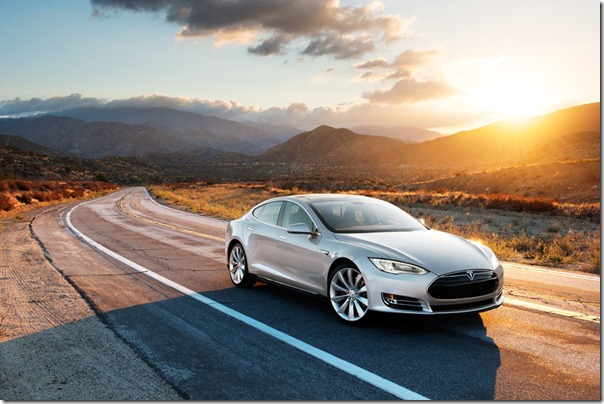Within my presentation to the EUAA National Conference in October 2013, I presented some figures on the potential electricity demand that could result from the up-take of electricity vehicles in Australia.
Whilst the electric vehicle (EV) and plug-in hybrid electric vehicles (PHEV) industry is still in its infancy, it is beginning to see significant growth – particularly in the United States, where it is estimated that around 140,000 electric vehicles are now on the road.
In no small part this is due to the release of the all-electric Tesla model S, which has sold an estimated 15,000 units since its release in June 2012. Other significant makes include the Chevrolet Volt (PHEV), Nissan Leaf (EV) and Toyota Prius (PHEV).
Whilst these other models have seen larger overall sales, it is the Tesla S which has really given market watchers pause for thought. A quick look through the Tesla’s specs including 420 km plus range, maximum power output of 310 kW, 0-100 km/h in 4.2 seconds suggests performance which to-date, is unmatched from its rivals. It has been awarded a five star safety rating and it even looks great in my opinion, unlike most other EVs.
Image sourced from: Tesla Motors
In Australia, EV uptake has been much slower with less than 1,000 vehicles on the road in aggregate. However, with technology development occurring at a rapid pace, this could soon change.
This then raises the question, given the declining demand for wholesale electricity in the NEM experienced over the last few years, how much of an impact could electricity vehicles have?
According to the ABS, 2012 Australian passenger vehicle fuel consumption for petrol based vehicles was around 15,696 ML, with average consumption of 10.9 litres/100 km.
This is just petrol based passenger vehicles – total vehicle fuel use was around double this at 31,800 ML when you include diesel and non-passenger vehicles.
Source: ABS 9208 Survey of Motor Vehicle Use, Australia, 12 months ended 30 June 2012
Assuming a petrol energy content of around 44 MJ/kg LHV (this varies quite a bit based on different fuel types), with a density of 0.7 kg/litre, gives an energy content of 30.8 MJ/L.
From this, we can calculate the implied total energy consumption of petrol passenger vehicles of around 483 PJ (30.8 x 15,696 /1000). Conventional petrol engines only convert about 17–21% of the energy stored in petrol to power at the wheels, so the implied energy used at the wheels is around 20% of that, at around 97 PJ.
Electric vehicles on the other hand are much are efficient, converting around 59–62% of the electrical energy from the grid to power at the wheels, giving an implied electrical demand of 161 PJ (97 / 60%) if we were to convert the entire petrol passenger fleet to electric. This equates to something of the order of 44,800 GWh of electricity demand (roughly a quarter of current total NEM consumption).
The uptake of EVs in Australia has the potential to reverse the current trend of declining wholesale demand and be a strong contributor in the longer-term.
The Tesla S average energy usage is relatively high at approximately 206 Wh/km due to its size and weight, however other smaller EVs have lower consumption levels such as the Nissan Leaf at 173 Wh/km. However, there are losses within the battery itself such that actual energy used/lost per km travelled will be somewhat higher than these figures. Assuming an effective consumption rate of 250 Wh/km, each passenger car would be expected to consume something in the order of 3.3 MWh per vehicle based on an average of 13,200 km travelled per year. Not an insignificant figure when you consider that average household electricity consumption is around 7 MWh per annum. At an average electricity price of $0.30/kWh, 3.3 MWh would equate to an annual cost of $990 to run the car.
Origin Energy have an online comparison tool for calculating the fuel costs for various vehicle types: all electric, electric hybrid, petrol and diesel based on average km’s travelled.
Having an electric vehicle sitting in the garage at home with a very large battery also offers the potential to use this as a storage device for a ‘smart’ rooftop PV system which could potentially time-shift generation into peak periods. There are many possibilities here.
While we are not likely to see mass uptake of electric vehicles in the near future, technological advances are occurring more quickly and once a killer product hits the market – think iPad when it was first introduced – the level of uptake surprises almost everyone. Its breakthrough products like Tesla’s model S which make people sit up a take notice. While we can’t change our cars as easily as a tablets and e-readers, it will be interesting to see just what happens when the might of the larger car manufacturers is applied to electric vehicles.
About our Guest Author
 |
Owen Kelp is a Brisbane-based Principal at ACIL Allen Consulting.
Owen’s presentation at the recent EUAA Annual Conference included these back-of-the-envelope calculations of the size of electrical load that would be represented by an electric vehicle fleet, which we thought would be of interest to our readers – hence we asked him to make this post here. Further background to Owen can be found on Owen’s LinkedIn profile. |



Thanks Owen
For those particularly interested in where Electric Vehicles might be headed, these reports written by Don McPhail as part of his E.S. Cornwall scholarship-sponsored world travels will be of some additional value.
Paul
There are multiple proponents of “EV’s as energy storage”. While I concede the possibility, I’m not convinced of the actuality.
* The EV owner wants to drive home with a charged car. Peak lopping of commercial demand from EV V2grid could leave him with barely sufficient charge to get home. Yes this could be managed, – my point is that it needs to be managed, and that the “free lunch” is a pretty meagre feed.
* Charge cycling of conventional batteries decreases battery life. While this is apparently less of a problem for Li-Ion and some other new technologies, the EV owner still needs to be convinced of this
On the other hand, EV’s at parking stations throughout the day might well be a convenient sink for renewables generation. With some smarts in the charging systems, varying charge rates could significantly reduce the need for alternative back-up generation for renewables. For example, sudden reductions in PV in a large regional city as clouds passed over could be offset by suspension of EV charging, rather than requiring a step-up of gas turbine generation.
I agree Phil, until batteries are really cheap no-one would be crazy enough to cycle them for a measly dollar or two. And if offpeak flattens right out with all the new dispatchable demand there might be even less financial incentive to so on a day-to-day basis.
It was a good presentation from Owen, should this scenario eventuate I cannot wait for the relevant network and retail tariff for the new peak period between 11pm and 2am.
Thanks Nathan.
EV charging certainly does highlight a few issues which would need to be thought through before uptake becomes large enough to cause headaches. The AEMC did some work on the implications of current market arrangements for EV and natural gas vehicles in late 2012. See: http://www.aemc.gov.au/Market-Reviews/Completed/energy-market-barriers-for-electric-and-natural-gas-vehicles.html